Herbs are an excellent addition to a chicken’s diet due to their fantastic health benefits. However, not all herbs are safe for chickens. Mint is one of the most commonly known herbs that are easy to use and cultivate, so it might make you wonder, “can chickens eat mint?”
All About Mint
Yes, chickens can eat mint! Not only will your birds enjoy its fresh scent, but they’ll also benefit from its nutritional content. Mint leaves are packed with phytonutrients and antioxidants such as vitamins A, vitamin B complex, and vitamin C. It also has calcium, phosphorus, iron, manganese, and potassium.
This table shows the nutritional value of 3.2 grams of fresh peppermint, one of the most common varieties of mint.
| Calories | 2.24 |
| Protein | 0.12 g |
| Carbohydrates | 0.48 g |
| Fat | .03 g |
| fiber | 0.26 g |
The Mint Family
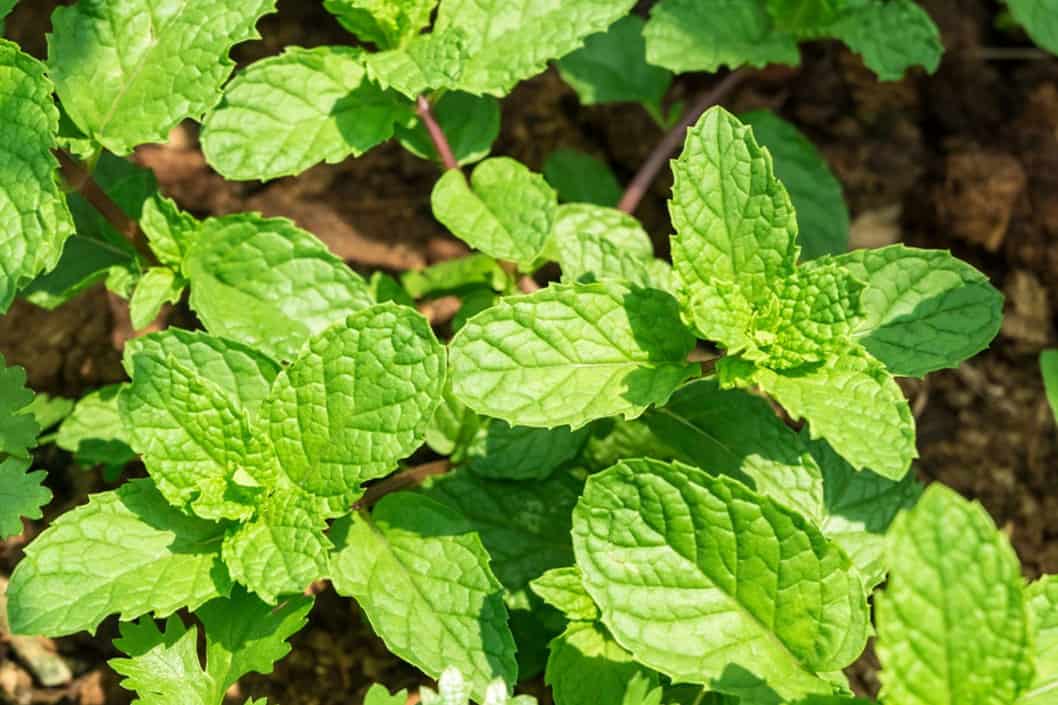
The mint family has hundreds of varieties. The ones listed below are some of the most commonly grown in the garden.
- Spearmint
- Peppermint
- Wooly mint
- Pineapple mint
- Horsemint
- Pennyroyal ginger mint
- Catmint
- Basil mint
- Watermint Corn or Field mint
- Orange mint
- Lavender mint
- Grapefruit mint
- Calamint Licorice Mint
- Chewing gum mint
Mint is Everywhere
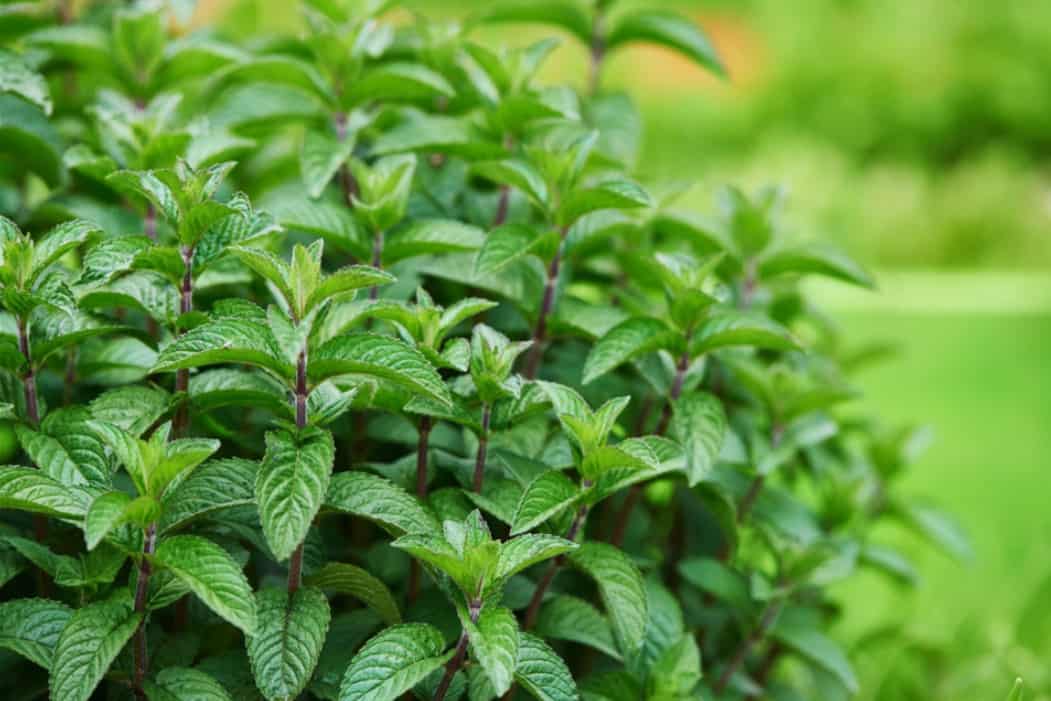
Mint has always been associated with fresh breath since it provides a cooling sensation in the mouth. It’s the main ingredient of toothpaste, breath mints, chewing gum, and mouthwash.
Aside from oral health products, mint is also used to add a refreshing flavor to food and drinks. It gives chocolate chip ice cream, lamb dishes, and mojito a rejuvenating twist. You can also add it to plain, cold water for a healthy summer drink.
Mint can be used either fresh or dried. It can be concentrated to create a soothing essential oil or brewed as a relaxing tea.
Growing Mint
This aromatic herb grows natively on any part of the globe, except for Antarctica. There may be hundreds of varieties, but all of them require the same growing conditions. It’s relatively low maintenance and is known for its rapid growth.
Mint plants thrive under the full sun or partial shade. They also prefer moist yet well-draining soil. Since these herbs are highly invasive, gardeners plant them in containers to keep them under control.
They also tend to cross-pollinate with other types of mint within close distance. Cross-pollination may lead to having a hybrid plant with an unfavorable flavor or scent. Spacing different varieties as far away from each other as possible will help solve this problem.
Why Mint is Good for Chickens
It aids indigestion
Since chickens are natural foragers and would munch on almost anything, they need help with their digestion. Peppermint relieves digestive issues such as indigestion, bloating, and gas. Animal studies show that mint relaxes stomach muscles and helps ease gut spasms and pain.
It helps relieve respiratory issues
Mint contains menthol, an active ingredient that helps alleviate respiratory symptoms such as nasal congestion. But do you know that it allows chickens to breathe better, too? Birds are prone to various respiratory issues, and mint can be a proactive approach to help them alleviate cold symptoms such as decongestion.
It has anti-bacterial and anti-inflammatory properties
Chickens are active explorers, so they are susceptible to catching bacteria from the soil or other sources. Adding mint to their diet can protect them from pathogenic bacteria, which can lead to infection.
Mint, most especially peppermint, can improve blood flow to an affected or inflamed area. It can act as an analgesic that can reduce pain and irritation.
It aids in blood circulation
Mint contains iron and manganese, minerals that can improve the hemoglobin level. It promotes healthy blood flow and optimal organ function.
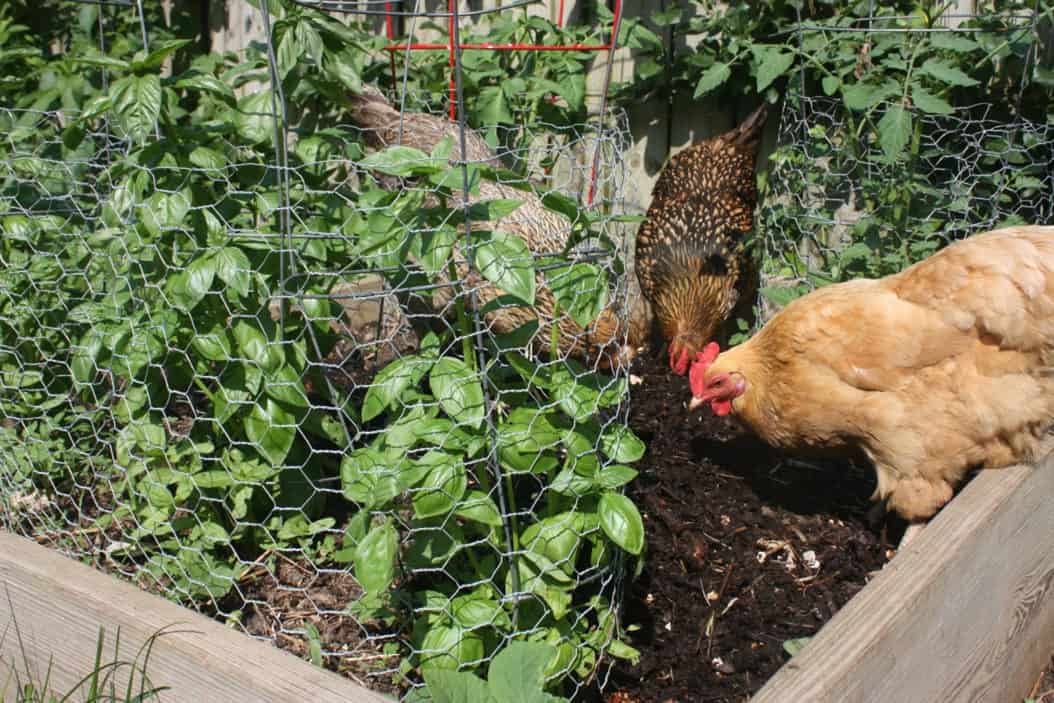
It boosts the immune system
Chickens, especially hens, encounter stress due to unruly roosters or threats from predators. The aroma of mint has a calming and relaxing effect that can help alleviate stress.
Mint is also packed with antioxidants and vitamins that can help boost the immune system of chickens.
It refreshes during hot days
Contrary to common belief, mint does not lower body temperature. However, menthol stimulates the brain that signals the cooling sensation.
Some backyard raisers love to add mint leaves and stems to their flock’s ice water during the summer months. It gives off a soothing scent that can refresh your chickens when it gets too hot.
It serves as protection from parasites
Mint is known to be a natural insect repellent. Some farmers add mint leaves to nesting boxes. When newly hatched chicks rub their bodies against the leaves, they get a layer of protection from fleas and mites.
Other Uses of Mint for the Coop
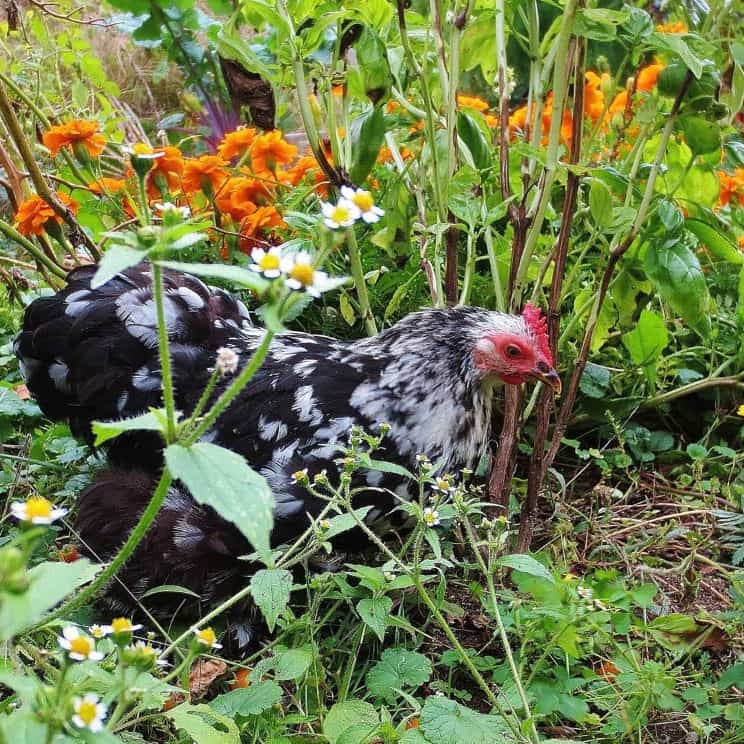
Aside from a wide range of health and nutritional benefits, mint has many uses in the chicken coop and the yard.
Natural Deodorizer
Chickens poop a lot, so the coop and the yard can have an unmistakable smell, especially during hot days. Since mint is one of the most aromatic herbs, it can deodorize the air and provide a refreshing scent.
To keep it smelling clean and fresh, you can sprinkle dried mint leaves in the nesting boxes and dusting areas.
Organic Pest and Parasite Repellant
Chicken coops and free-range yards are magnets to pests, parasites, and rodents. You may apply drops of peppermint essential oil in the corners of the coop to deter mice. A more straightforward way would be to plant mint around the yard to keep parasites away.
When you trim your mint plants, you can toss excess leaves into the run and coop to repel insects. You can also hang dried bundles of mint leaves inside the enclosure not only to freshen up the air but to keep flies away as well. Mint leaves can also be made into a bug repellant spray for a more natural and environmentally friendly insect repellant.
A Shady Shelter and Hiding Place
Chickens love to explore all day, so it would be best to provide them with many bushes and plants to protect them from the heat and some predators. Mint is an excellent source of shade and shelter for your flock. It can grow as high as two feet—just enough height to provide a safe and comfortable hiding place.
Some varieties of mint can grow tall quickly, providing shade around the coop in just a couple of months.
A Sturdy Plant for Pecking
Chickens love to peck, scratch, and trample on plants, much to the dismay of their owners. Mint, however, is an indestructible plant that can withstand all the daily activities of your flock. Mint plants grow fast, so if your chickens destroy them, you can always plant another batch.
6 Tips on Using Herbs for Your Chickens
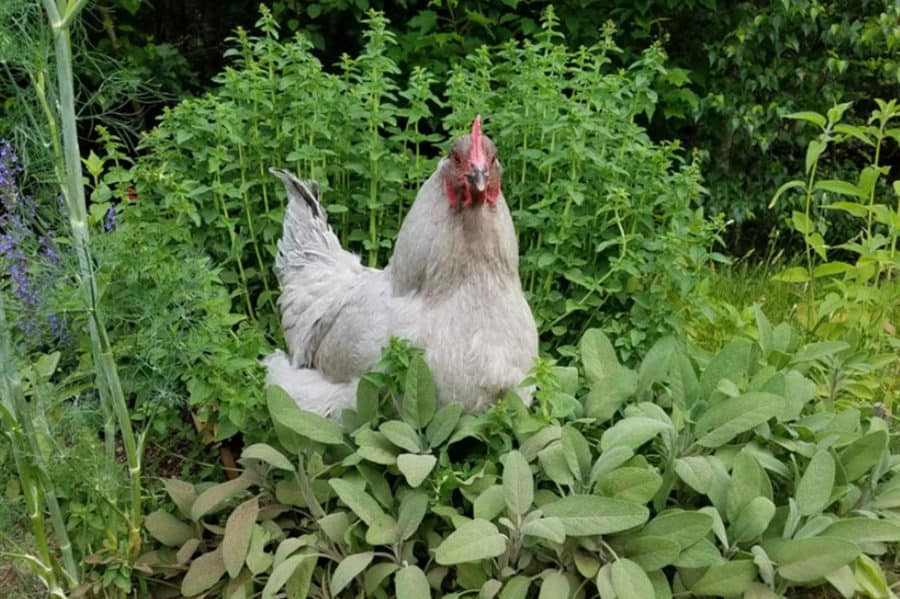
The following are a few simple tips that can help ensure that your chickens will get the optimum benefits of mint and other herbs.
- Herbs can wither or spoil quickly, especially during the hot months, so regularly refresh them. If you have a surplus of harvested leaves, it would be best to dry them at once so you can use them for other purposes.
- Avoid putting mint leaves in dirty drinking water. Doing so will promote the growth of bacteria and can do more harm than good. Make sure to clean water and feed containers to avoid contamination and illnesses.
- If you’re planning to give mint leaves or other herbs as treats, make sure not to overdo it. Give them in moderation so they will have space for other food. If you’re unsure of the number of treats and herbs to give, you may consult your local veterinarian.
- Observe how your chickens react to the mint that you give them. Just like any other food, the effects can be different for each one. It would be best to check for any allergies, reactions, or a general dislike of the herbs.
- Please don’t give your flock essential oils since these are very potent and could harm them. Stick to using leaves and stems for their food and drink instead.
- Try giving other herbs for variety. These can also provide other nutrients and new flavor profiles for your chickens. Some herbs are also helpful in the coop, just like mint.
The following are some herbs that you can try and their benefits:
- Basil – It can help improve the health of the chicken’s mucus membrane
- Oregano – This herb has anti-parasitic and anti-bacterial properties that can help support the chicken’s respiratory and immune systems.
- Thyme – Just like mint, thyme is also an excellent bug deterrent, helping to protect your flock from fleas and other bugs.
- Cilantro – Cilantro contains antioxidants that can help improve the performance of breeders and layers.
Summary
Can chickens eat mint? Yes, they can. It’s packed with nutrients that can keep your flock healthy and happy. Aside from the wide range of health benefits, mint plants can also help maintain your coops. So, cultivating them is indeed a win-win situation for you and your flock!

Joseph Hudson has been raising chickens for over 15 years. In 2018, he completed the Agriculture & Natural Resources program at Mt. San Antonio College. He currently raises over 1400 chickens on his 7.5-hectare farm. He keeps sharing his experience on raising healthy and happy chickens on Chicken Scratch The Foundry.







